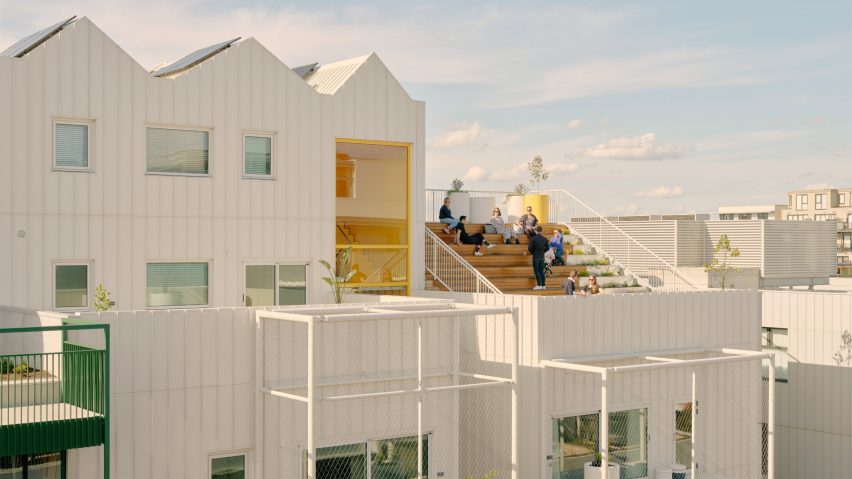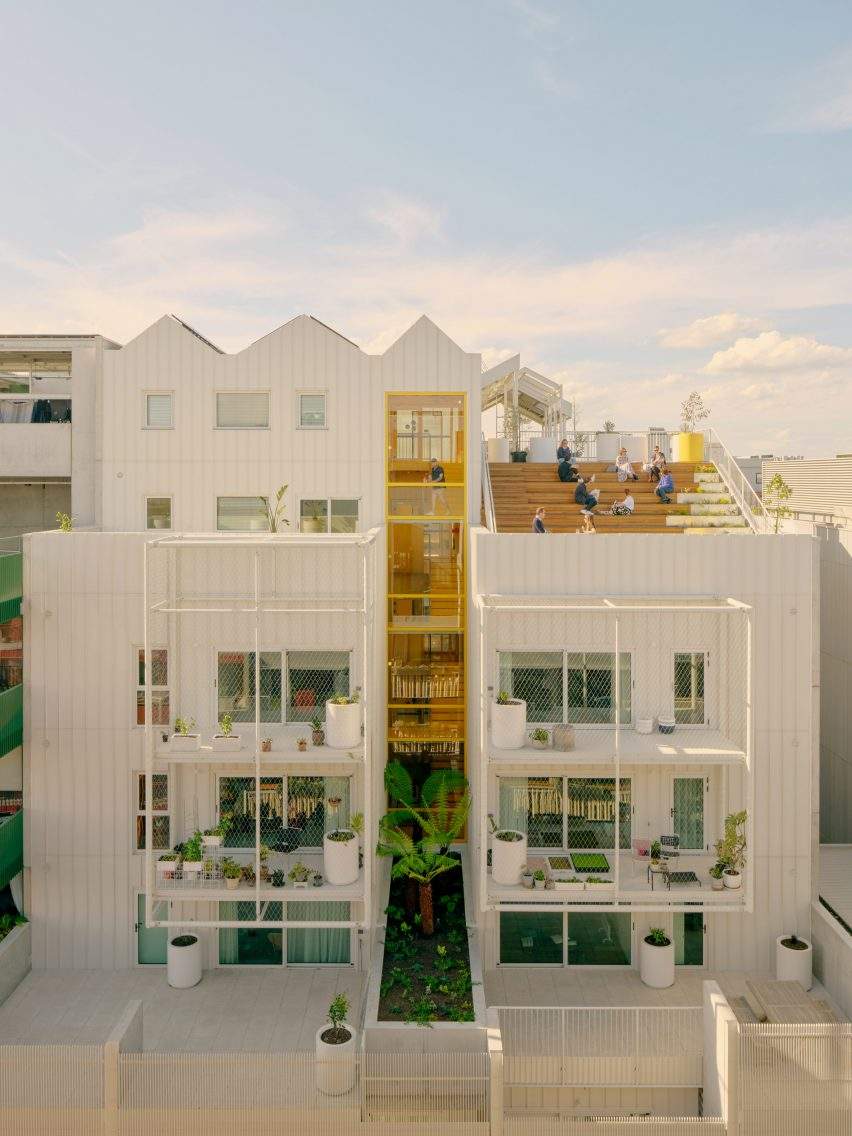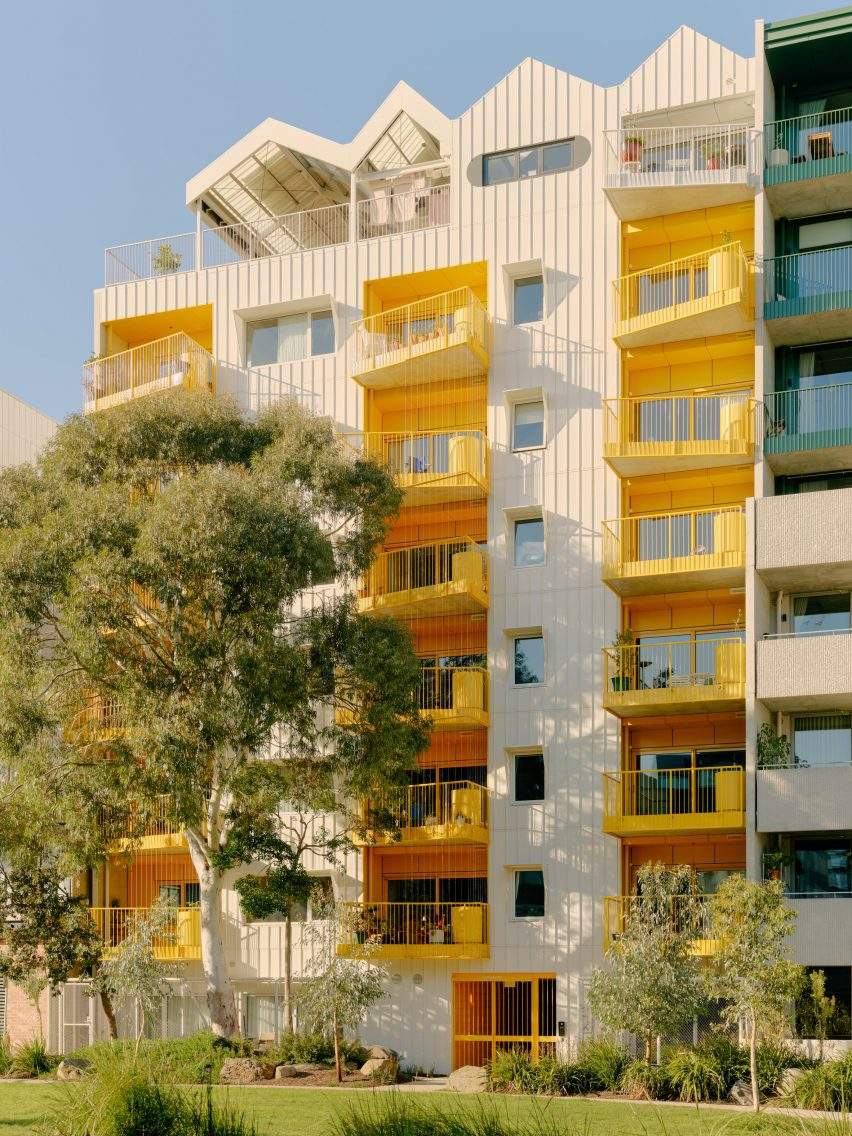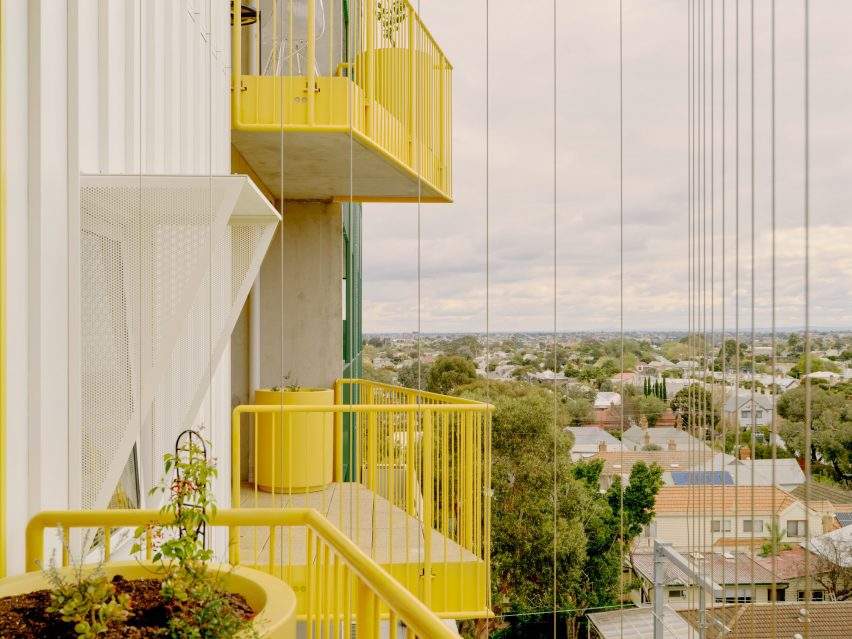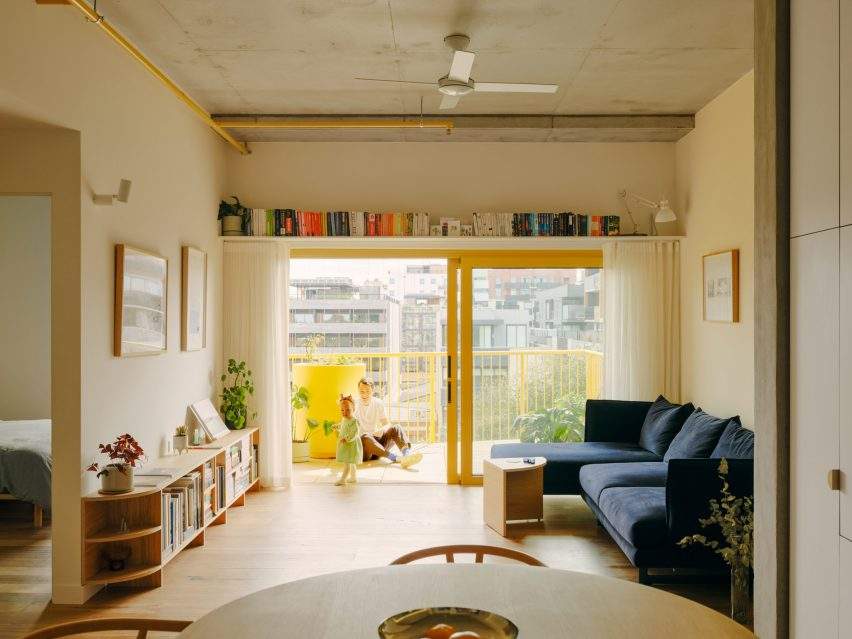Austin Maynard Architects designed the ParkLife apartment block in the Brunswick area of Melbourne Building. The apartment block is characterized by its bright yellow balconies and its zigzag roofline that resembles mountains. Nightingale Village, a complex of six apartment buildings built by Nightingale Housing for not-for-profit purposes, encloses the block. This development model aims to bring about housing that is both “financially, socially and ecologically sustainable.” The bright yellow balconies add a cheerful touch to an otherwise dull apartment building. Austin Maynard Architects opened up the 37-unit block to a public park on the north side.
A yellow-painted walkway cuts through the middle of the block, forming a bridge between the park and the urbanized area at the front of the block. It also offers a secure place for people to park bicycles. The studio commented that their site posed a challenge, since there was an existing interface to the east and plans for constructing a comparable apartment Melbourne Building at the back. The ground floor of this design features a series of gardens, and the notable facade of yellow balconies. Two generously-sized interior courtyards were placed in between the dwellings to form dual-aspect areas.
The facade of the building is adorned with a pattern of gardens on the first floor and golden-hued balconies. The Village was given a generous view, and we were happy to be able to offer it to them. The ParkLife community entry and bike parking were separated, creating a main walkway through the center of our building, which connected the newly constructed park with The Village ‘hub’ at Duckett Street. Nightingale Housing has divided ParkLife into apartments with one to three bedrooms. Additionally, they offer “Telihaus apartments,” which are compact homes that are assigned to individuals in need of social housing.
The building is split into two sections at the front and back, each of which has two large internal courtyards that facilitate the use of double-sided rooms.
The building’s roof is home to a variety of shared amenities, such as a covered patio, a laundry room, a drying area, and a wooden amphitheater with stepped seating that faces the front of the Melbourne Building. The exterior walls of ParkLife were covered in white steel, with lattices and grids to support the growth of plants. Openwork, the landscape architects, helped design the rooftop area, which comprises a garden with fruit trees and a space for outdoor picnics.
The apartment’s exterior is covered in white steel cladding, and the design incorporates cables, grills, and rods to create a space for vegetation to flourish. The interiors are kept “deliberately simple,” with timber floors, white walls, and concrete ceilings. The deck is large enough to host a large gathering with an electric barbecue, which is protected from the blazing sun and gusty winds.
The studio stated that the goal was to allow residents to customize their residences rather than to apply a lot of finishes and textures. The layout of the apartments was created to take advantage of natural lighting and give the residents the opportunity to customize their internal spaces. Moreover, The space was designed to be aesthetically pleasing and highly functional, with a great view and plenty of natural light. The residents can customize the apartment to their liking, making it their own special home.
Finally, find out more on ArchUp:


 العربية
العربية